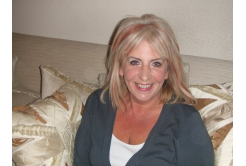Teaching imaginatively
By Jeanne Perrett,
BA Hons English Literature, RSA. TESOL
Author, Teacher Trainer
‘Imagination is more important than knowledge.’ Albert Einstein.
The most important thing for any learner is not how many facts we absorb or how many words we know, not how much grammar we can remember, nor how many exams we pass or what grades we obtain each term but how we see ourselves as learners.
When we have a positive image of ourselves doing something…anything, we flourish, we enjoy our tasks and our achievements and our sense of self-worth and fulfillment increases.
Writing imaginatively
- Let children learn to love writing. Let them write with coloured markers on posters, banners, cards or post-it notes.
- Let them illustrate their work with drawings or pictures from magazines.
- Help them to create their own books. Just a few simple pages stapled or folded together and given a cover help writing work become more interesting than when done in an exercise book.
- Build up an author/ editor relationship with them. They are the authors and you are the editors. Of course they will make mistakes, all authors do but as an editor you can help them to improve their writing whilst retaining an enjoyment for it.
- Don’t forget that authors not only have their name in big letters on the front cover of their work, they sometimes have to give autographs at book signings! Ask for their autographs! Children love experimenting with signatures.
Speaking imaginatively
- Introduce movement into speaking activities; create situations for the children to act within.
- Give them props to use while they practise simple dialogues. Focusing on objects and movement takes the fear out of using new language and helps children to become more fluent and to use English more realistically.
- Introduce a secondary element into speaking activities. When they are practising a dialogue hand out cards with happy, sad. angry, excited on them and ask them to say the dialogue in that manner. Or hand out cards with weather conditions on them; it’s raining, it’s snowing and have them speak as if they are in the rain, are very cold and so on.
- Don’t forget, we don’t just speak English, we whisper it, we call it, we mouth it and we yell it too.
Singing imaginatively
- Encourage the children to stand up when they are singing.
- Let them make cardboard microphones or use their pencils as mikes.
- Introduce a few very simple dance steps.
- Let them form a band, choose a name for it and perform the songs in class or at school concert.
- Hand out simple musical instruments to accompany the songs. Everyone can play tambourines, triangles and maracas.
- Sing with them.
Assessing imaginatively
- All our creative efforts with the children can be negated if we sum up their many and varied endeavours with only a grade or a mark. The children are worth more than that and so is your work.
- Create assessment charts which reflect the things which you deem to be important in a child’s progress. Include such things as being kind, being a good listener, being a leader, being co-operative, being punctual, having a sharpened pencil, listening to friends when they speak English, looking at the teacher, helping to keep the classroom look nice.
- Make sure that the children know their individual talents have been recognized and appreciated. After all, don’t forget that one of Albert Einstein’s teachers apparently wrote on his school report, ‘He will never get anywhere.’
Jeanne Perrett is the author of several bestselling ELT courses. She has lived in Greece since 1981 and having taught English for twenty years she now divides her time between writing and travelling. As a teacher trainer Jeanne has given seminars and talks all over the world. Her special areas of interest are multiple intelligences, multi-sensory teaching, whole-brain learning and the creative personal development of teachers and students. She always combines a little theory with a lot of practical activities. Jeanne lives with her husband and their four children in the village of Moskohori, Lamia. Jeanne is co-author of the successful Pearson Longman Junior series Yazoo.
This article has been contributed by Pearson Longman.











